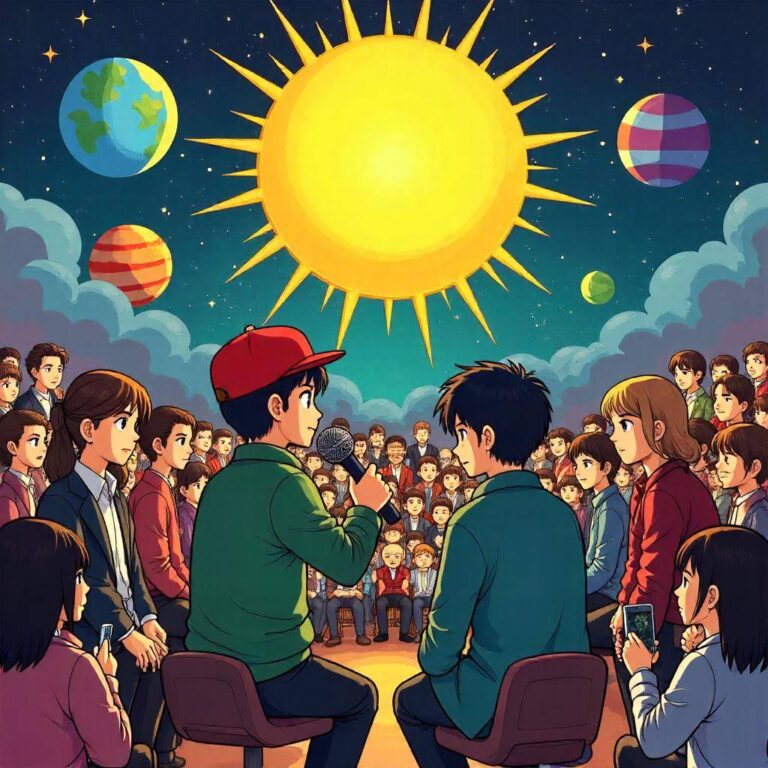Reader’s Question:
I’ve heard people say that Demon Slayer is boring and that shows like Haikyuu and Crayon Shin-chan are more interesting. What do you think? Isn’t Demon Slayer better? I feel like the best parts are still to come, especially the Infinity Castle arc.
Introduction
Anime has emerged as a cultural
phenomenon with a rich tapestry of storytelling, character development, and thematic depth. Among the myriad of series available, “Demon Slayer” (Kimetsu no Yaiba) has garnered significant attention, both positive and negative. While some viewers laud its animation quality, emotional depth, and compelling story arcs, others criticize it for being formulaic or less engaging compared to other series, such as “Haikyuu” or “Crayon Shin-chan.” This discourse begs the question: What makes a series like “Demon Slayer” resonate with some audiences while leaving others unimpressed? In this analysis, I will explore various perspectives on this debate, incorporating elements from my backgrounds in psychology and legal studies to provide a comprehensive understanding of the anime landscape.
Background Context
“Demon Slayer,” created by Koyoharu Gotouge, debuted in 2016 and quickly gained traction, leading to a massively successful anime adaptation by Ufotable in 2019. The story follows Tanjiro Kamado, a young boy who becomes a demon slayer after his family is slaughtered by demons, and his sister Nezuko is transformed into one. This narrative taps into universal themes of family, loss, and perseverance, which resonate with a wide audience. Conversely, “Haikyuu,” a sports anime centered around volleyball, and “Crayon Shin-chan,” a comedic slice-of-life series, offer different storytelling methods and themes. “Haikyuu” focuses on teamwork, determination, and personal growth, while “Crayon Shin-chan” provides social commentary through humor and everyday scenarios. Each series caters to different viewer preferences, and therein lies the key to understanding the varied opinions surrounding them.
Industry Analysis
The anime industry is characterized by its diverse genres and styles, impacting viewer engagement. “Demon Slayer” emerged during a time when visually stunning animation became a significant selling point. Ufotable’s expertise in creating breathtaking battle sequences, alongside a compelling soundtrack, contributed to the series’ meteoric rise in popularity. This, paired with strategic marketing and merchandise, helped establish “Demon Slayer” as a cultural icon. In contrast, “Haikyuu” capitalized on the sports genre’s appeal, focusing on character relationships and personal journeys rather than purely visual spectacles. Meanwhile, “Crayon Shin-chan” leverages humor and cultural references to generate relatability, offering viewers a lighthearted escape from reality. The different approaches to storytelling and animation inevitably attract distinct audiences, creating a dynamic landscape in which preferences are subjective.
Character Psychology
Understanding character development is crucial to analyzing viewer engagement. “Demon Slayer” uses archetypal characters that evolve throughout the series. Tanjiro’s unwavering compassion and determination resonate with many viewers, allowing them to connect emotionally with his journey. His character embodies resilience, which can inspire viewers facing their own challenges. The psychological concept of identification plays a significant role here; viewers may see themselves in Tanjiro, finding strength in his perseverance. On the other hand, “Haikyuu” offers an ensemble cast, each with unique backgrounds and motivations. This diversity enables viewers to connect with different characters, fostering a sense of community around shared experiences. The psychological principle of social comparison comes into play, as viewers may find encouragement by relating to the struggles and triumphs of the characters. In “Crayon Shin-chan,” the humor stems from relatable scenarios that reflect everyday life. The show’s protagonist, Shin-chan, navigates childhood with an innocent yet mischievous perspective, inviting viewers to reminisce about their own experiences. This nostalgia can be a powerful psychological tool, drawing audiences into the narrative through familiarity and comfort.
Storytelling Ethics
The ethical dimension of storytelling in anime is an often-overlooked aspect. “Demon Slayer” presents themes of violence, trauma, and loss, which can be triggering for some viewers. The portrayal of demons as tragic figures who were once human introduces moral complexity, inviting discussions about the nature of good and evil. However, creators must navigate the fine line between engaging storytelling and the potential for desensitization to violence. Conversely, “Haikyuu” and “Crayon Shin-chan” tackle their themes with varying degrees of sensitivity. “Haikyuu” addresses the realities of competition and personal growth without glorifying toxic behavior, emphasizing teamwork and ethical sportsmanship. In contrast, “Crayon Shin-chan” uses satire to reflect societal norms, often provoking thought while ensuring audiences recognize the absurdity of certain behaviors. For creators, maintaining this ethical balance can enhance storytelling’s impact without compromising viewer well-being.
Cultural Impact
“Demon Slayer” has undoubtedly left a significant mark on contemporary anime culture. The series sparked discussions about representation, mental health, and the importance of familial bonds. Its popularity also led to increased interest in traditional Japanese culture and history, as the story incorporates elements from Japan’s Taisho Era, providing a gateway for international audiences to explore deeper cultural narratives. In comparison, “Haikyuu” has revitalized interest in sports anime, encouraging a new generation to engage in athletics. The series embodies the spirit of perseverance and teamwork, making it a source of motivation for young viewers. “Crayon Shin-chan,” on the other hand, has become a cultural staple in Japan, known for its humorous take on societal norms and family dynamics, reflecting the complexities of modern life. The cultural resonance of these series highlights the importance of context in determining perceived value. Fans may favor one series over another based on personal experiences, cultural background, and individual preferences.
Practical Insights for Creators and Viewers
For creators, understanding audience preferences is crucial. Engaging with viewers through social media platforms and attending conventions can provide valuable insights into what resonates with audiences. By being open to feedback and willing to adapt, creators can craft narratives that are not only entertaining but also meaningful. For viewers, it’s essential to approach anime with an open mind. Each series offers a unique perspective and storytelling style. Engaging with different genres can expand one’s appreciation for the art form and foster a deeper understanding of the cultural contexts behind the narratives.
Conclusion
The debate surrounding the merits of “Demon Slayer” versus “Haikyuu” or “Crayon Shin-chan” ultimately reflects the subjective nature of art and storytelling. Each series presents distinct narratives, character arcs, and thematic explorations that resonate differently with viewers. By appreciating these differences, we can cultivate a richer understanding of anime as a medium. As an audience, it is valuable to recognize that preferences are often shaped by personal experiences and psychological factors. Engaging with a variety of anime can lead to a more nuanced perspective on storytelling, character development, and cultural impact. I invite you, the reader, to share your experiences with these series. What draws you to one over the other? How do you see the interplay of storytelling, character development, and cultural context in your viewing experience? Together, let’s continue this engaging dialogue on the evolving landscape of anime.



